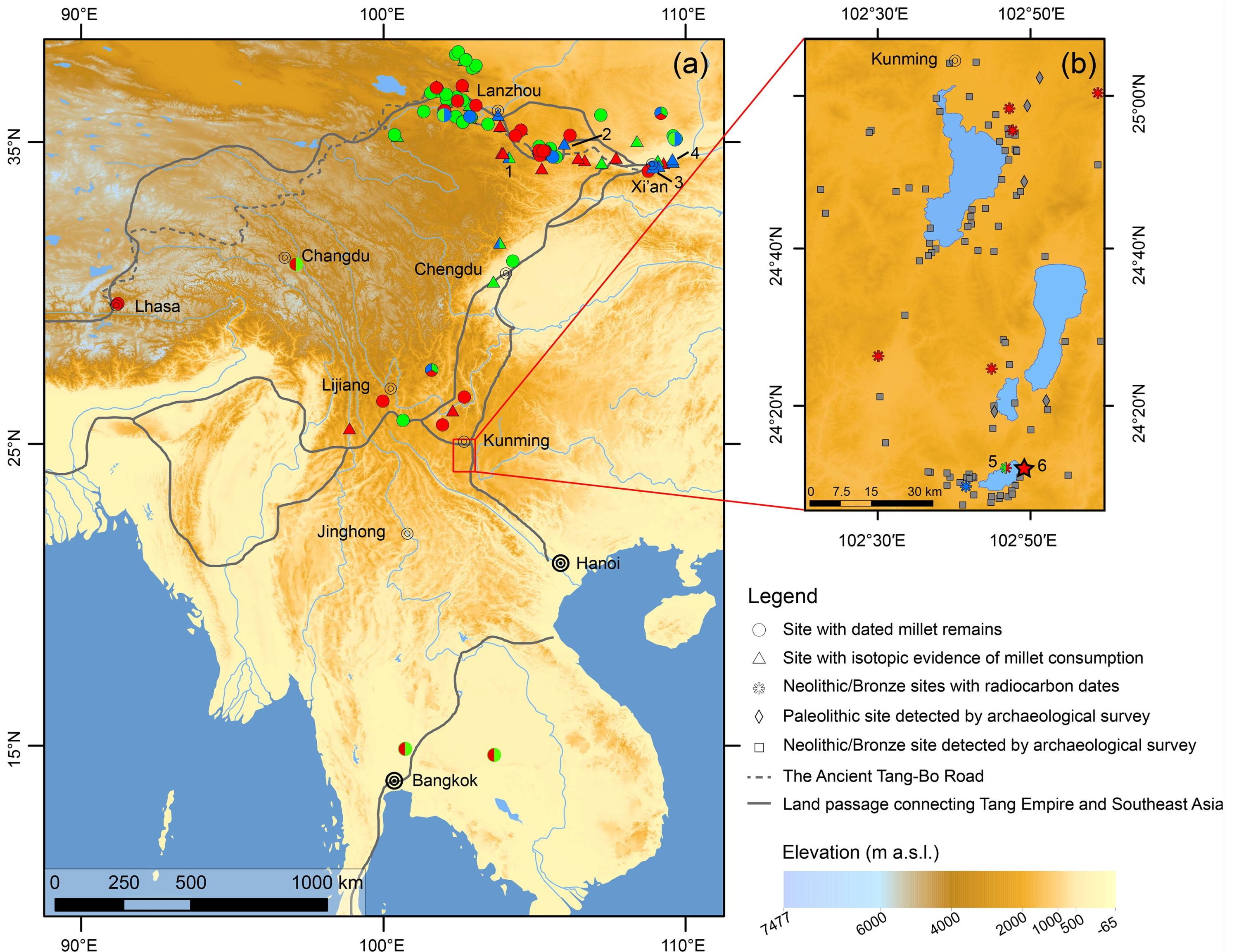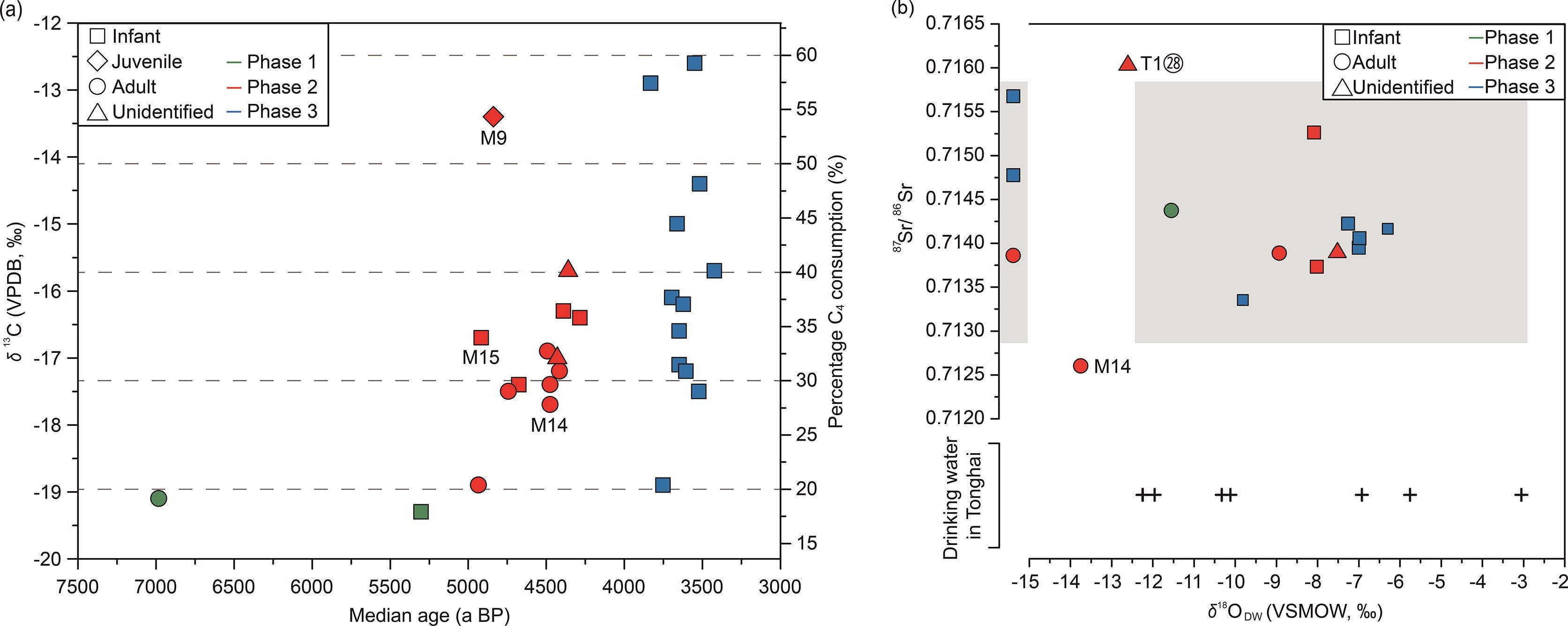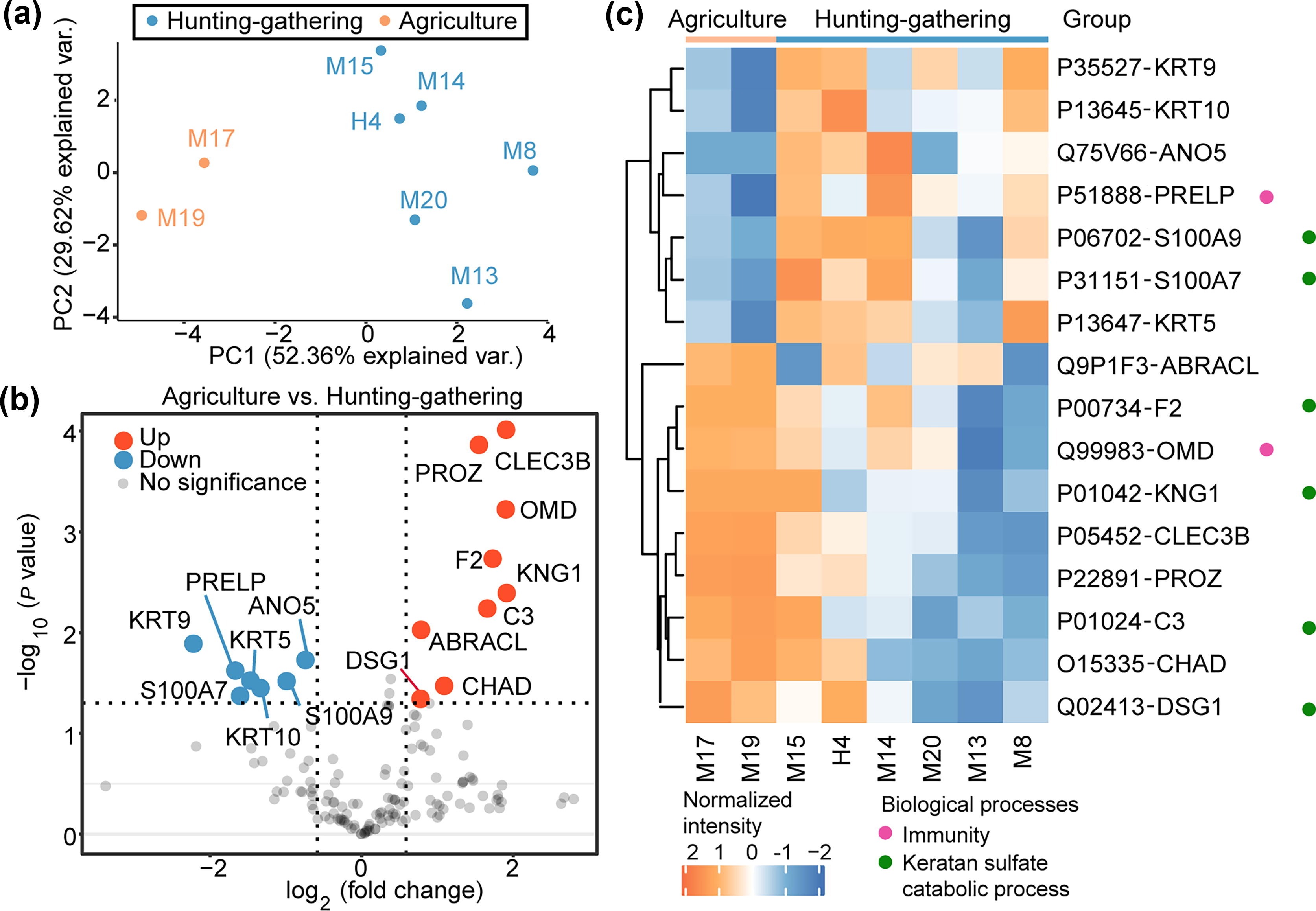文章来源:Ma Minmin, Lu Minxia, Sun Rui, Zhu Zhonghua, Fuller Dorian Q., Guo Jianxin, He Guanglin, Yang Xiaomin, Tan Lingling, Lu Yongxiu, Dong Jiajia, Liu Ruiliang, Yang Jishuai, Li Bo, Guo Tiannan, Li Xiaorui, Zhao Dongyue, Zhang Ying, Wang Chuan-Chao, Dong Guanghui.(2024). Forager-farmer transition at the crossroads of East and Southeast Asia 4900 years ago. Science Bulletin: 69(1): 103-113. https://doi.org/10.1016/j.scib.2023.10.015.
整理人:徐嘉苗,2021级本科生
整理时间:2024年6月3日
Abstract: The southward expansion of East Asian farmers profoundly influenced the social evolution of Southeast Asia by introducing cereal agriculture. However, the timing and routes of cereal expansion in key regions are unclear due to limited empirical evidence. Here we report macrofossil, microfossil, multiple isotopic (C/N/Sr/O) and paleoproteomic data directly from radiocarbon-dated human samples, which were unearthed from a site in Xingyi in central Yunnan and which date between 7000 and 3300 a BP. Dietary isotopes reveal the earliest arrival of millet ca. 4900 a BP, and greater reliance on plant and animal agriculture was indicated between 3800 and 3300 a BP. The dietary differences between hunter-gatherer and agricultural groups are also evident in the metabolic and immune system proteins analysed from their skeletal remains. The results of paleoproteomic analysis indicate that humans had divergent biological adaptations, with and without farming. The combined application of isotopes, archaeobotanical data and proteomics provides a new approach to documenting dietary and health changes across major subsistence transitions.
摘要:东亚农民向南扩张通过引入谷物农业深刻影响了东南亚的社会演变。然而,由于实证资料有限,关键区域的谷物扩展时间及路线仍不明确。本研究报道了直接从中央云南兴义遗址出土、经过放射性碳年代测定的人类样本中获取的宏观化石、微观化石、多种同位素(碳/氮/锶/氧)及古蛋白质数据,这些样本的年代介于公元前7000年至3300年之间。饮食同位素揭示了大约公元前4900年小米的最早出现,且在公元前3800年至3300年间对植物和动物农业的依赖增强。从他们骨骼残骸分析的代谢和免疫系统蛋白质中,也明显观察到狩猎采集者与农耕群体之间的饮食差异。古蛋白质分析结果表明,无论是否从事农业,人类在生物适应上存在差异。同位素、考古植物学数据与蛋白质组学的综合应用为记录跨过主要生计转变时期的饮食与健康变化提供了一种新方法。

图 新石器晚期-青铜时代粟黍在青藏高原东缘和东南亚地区的分布

图 兴义遗址生存策略三阶段模式变化

图 农业出现前后人群代谢和免疫蛋白质方面的显著差异
原文链接:https://www.sciencedirect.com/science/article/pii/S2095927323007156
节选转引:https://mp.weixin.qq.com/s/3pN_0YFYqPfIreZzTR3LHg